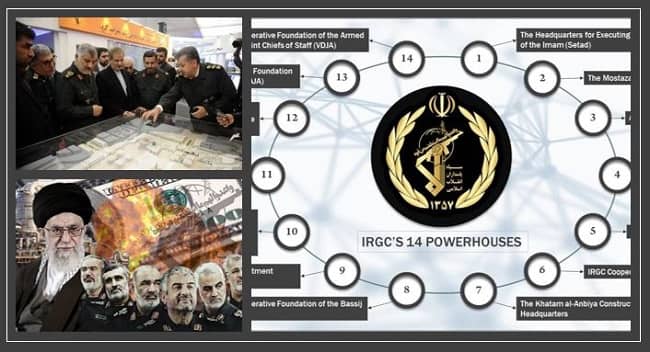For years, the economic crisis in Iran has been growing. Officials have long sought to blame this on international sanctions in order to hide the fact that the regime’s economic policies are at fault.
How else would you explain that there was not even a small let up in the problems following the signing of the Joint Comprehensive Plan of Action (JCPOA) in 2015, which led to sanctions being removed? In fact, the Iranian people took to the streets over inflation, poverty, and unemployment in December 2017, several months before the US pulled out of the deal and reinstated some of the sanctions.
The uprising quickly became about regime overthrow, but the first protest was centred on economic and as protesters across the years have made clear, mismanagement and corruption is the cause, not sanctions. That’s why Iranians broadly supported the reintroduction of sanctions, chanting “the enemy is here; they are lying when they say it is America”.
The regime’s lies about sanctions are being openly contradicted by the people, political activists, and even their own economists. A number of these economists even sought to quantify how longstanding corruption in both the government and the so-called private sector is damaging the economy.
Farshad Momeni, an economics professor at Allameh Tabatabai University, said: “Iran’s political economy has been increasingly taken over by the mafia from the end of the Iran-Iraq war until today.”
He noted that “privatization” of government industries has only put more wealth into the pockets of regime affiliates, including the IRGC which now controls about half of Iran’s gross domestic product.
In fact, from 1991 until 2019, 900 projects, companies, and enterprises worth $170 billion were moved from the state sector to the private sector. And that doesn’t even account for the money from import and export or smuggling.
Iran’s Central Bank said the country earned $180 billion from exports in 2018 and 2019, but they don’t know where all the money went. The Iranian Resistance believes that it’s lining the coffers of “IRGC financial institutions and so-called religious foundations controlled by… Supreme Leader Ali Khamenei”.
The Resistance said: “Approximately 80 per cent of Iran’s population is living under the poverty line, and the situation is growing steadily worse as a result of runaway inflation and rising commodity prices. Many citizens have been forced to remove vital staples from their diet, and pensioners throughout the country have staged months of protests calling attention to the fact that their income is not keeping up with the rising cost of living. Those protests are a likely indicator that broader unrest is looming, as the people’s concerns over the coronavirus are overtaken by the effects of economic hardship and the lingering resentments regarding crackdowns on prior uprisings.”
